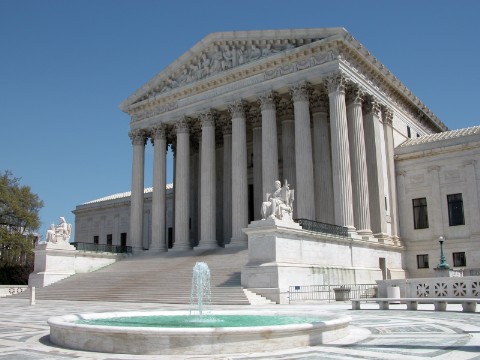
State and local government officials can be sued for money damages in their individual capacity if they violate a person’s constitutional rights. Qualified immunity protects government officials from such lawsuits where the law they violated isn't “clearly established.”
Deadly Force High-Speed Chase
In Plumhoff v. Rickard, the Court held 7-2 that police officers didn’t violate the Fourth Amendment when they shot and killed the driver of a fleeing vehicle to end a dangerous car chase. Alternatively, the Court unanimously concluded the officers were entitled to qualified immunity.
Donald Rickard drove away after being pulled over because his vehicle had only one operating headlight and was pursued by police. He drove over 100 miles an hour and passed more than two dozen vehicles before exiting the highway where he made contact with three police cars. Rickard’s tires were spinning and his car was rocking back and forth when Officer Plumhoff fired three shots into his car. Rickard then reversed his car, nearly hitting an officer on foot, and again fled. Officers fired 12 shots more killing Rickard and his passenger.
Rickard’s surviving daughter argued that the Fourth Amendment did not allow the police to use deadly force to end the chase and that even if police were permitted to fire their weapons, they fired too many shots. The Court disagreed concluding the use of deadly force was reasonable because “[u]nder the circumstances at the moment when the shots were fired, all that a reasonable police officer could have concluded was that Rickard was intent on resuming his flight and that, if he was allowed to do so, he would once again pose a deadly threat for others on the road.” The number of shots wasn’t unreasonable because “if police officers are justified in firing at a suspect in order to end a severe threat to public safety, the officers need not stop shooting until the threat has ended.”
The Court concluded that even if the use of deadly force in this case violated the Fourth Amendment the officers would be entitled to qualified immunity. The most on-point Supreme Court case at the time of this case granted qualified immunity where the facts were less favorable to the officer than the facts in this case. So it was not clearly established the force in this case was unreasonable.
The SLLC’s amicus brief argued that the lower court failed to properly apply qualified immunity. The Court noted that the lower court “said nothing about whether the officers violated clearly established law,” when denying the officers qualified immunity.
Viewpoint Discrimination when Moving Protesters
In Wood v. Moss, the Court unanimously granted qualified immunity to two Secret Service agents who moved anti-Bush protesters a block further from the president than pro-Bush supporters.
Pro- and anti-President Bush demonstrators had assembled on opposite sides of the street on which President Bush’s motorcade was supposed to travel to take him to a cottage in Jacksonville, Oregon, for the evening. The president made a last-minute decision to have dinner at the outdoor patio dining area of the Jacksonville Inn. Learning of the route change, protesters moved down the street in front of the Inn. Secret Service agents moved them two blocks down the street, about a block further away from the Inn than the supporters. The anti-Bush protesters sued two Secret Service agents claiming their First Amendment right to be free from viewpoint discrimination had been violated. The agents claimed they were entitled to qualified immunity.
Justice Ginsburg had little trouble concluding the officers in this case were entitled to qualified immunity: “No decision of this Court so much as hinted that their on-the-spot action was unlawful because they failed to keep the protesters and supporters, throughout the episode, equidistant from the president.”
The SLLC’s amicus brief encouraged the Court to tour downtown Jacksonville using Google Maps Street View. What the Justices would discover is there is a parking lot adjacent to the Jacksonville Inn’s outdoor patio which the anti-Bush protesters would have had direct access to had they not been moved two blocks away. Pro-Bush demonstrators had no direct access to the Inn where they were gathered because the side of the Inn they were facing was totally blocked by another building. The Court observed these geographic features when concluding that the agents had a security-based rationale for moving the anti-Bush protesters out of weapons range of the president.
The National Conference of State Legislatures, the National League of Cities, the National Association of Counties, the United States Conference of Mayors, and International Municipal Lawyers Association, and ICMA signed onto the SLLC's briefs in both cases.
New, Reduced Membership Dues
A new, reduced dues rate is available for CAOs/ACAOs, along with additional discounts for those in smaller communities, has been implemented. Learn more and be sure to join or renew today!
